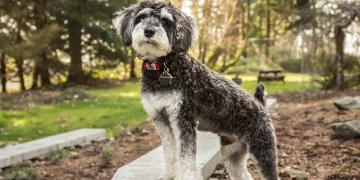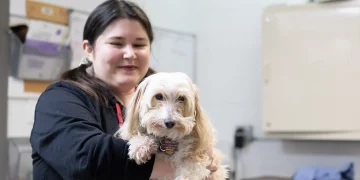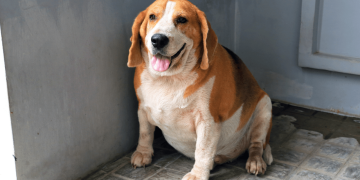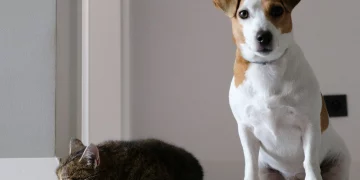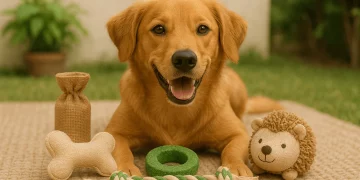Caring for your dog’s paws is an essential part of maintaining their overall health and well-being. Just like humans, dogs use their paws constantly, and they play a vital role in helping your dog walk, run, and explore the world. However, dog paw care goes beyond simple foot cleaning—it also involves ensuring their paws are free from injuries, infections, and excessive growth of nails, which can lead to discomfort and even health problems.
One of the most crucial aspects of paw care is regular nail trimming, an often overlooked part of grooming that can have significant effects on your dog’s health.
In this article, we’ll explore how to properly care for your dog’s paws, the importance of regular nail trimming, and how to ensure your dog’s paws stay healthy and comfortable.
Why Are Dog Paws Important?
Your dog’s paws are complex and serve several vital functions. They are made up of bones, muscles, tendons, and ligaments, all working together to provide the flexibility and strength needed for movement. Dogs also have paw pads, which are tough, thick areas of skin that protect their feet from rough surfaces, extreme temperatures, and potential hazards like sharp objects.
The health of your dog’s paws is crucial because:
- Mobility: Healthy paws ensure your dog can walk, run, and play comfortably.
- Protection: Paw pads protect against cuts, abrasions, and infections.
- Temperature Regulation: Paws help in regulating your dog’s body temperature by providing insulation against hot or cold surfaces.
- Sensory Input: Dog paws contain sensitive nerve endings that provide feedback about the ground they’re walking on, helping them to navigate their environment.
Proper paw care involves keeping the pads moisturized, trimming nails regularly, checking for injuries or debris, and keeping the paws clean and healthy.
Importance of Regular Nail Trimming
One of the most vital parts of paw care is regular nail trimming. Overgrown nails can cause a host of problems for your dog, from discomfort to serious health issues. Let’s look at why this is so important:
1. Prevents Pain and Discomfort
When your dog’s nails grow too long, they can cause discomfort and pain. Long nails can become ingrown (growing into the paw pad), or they may cause your dog to walk awkwardly, putting extra pressure on their joints and bones.
- Nail Curvature: Long nails may start to curl, which can lead to pressure on the paw pads. This is especially true for dogs that are not very active and don’t naturally wear down their nails on hard surfaces.
- Abnormal Walking: Overgrown nails can change the way your dog walks, leading to uneven weight distribution and even joint pain over time.
2. Reduces the Risk of Injury
Long nails can catch on carpets, bedding, or outdoor debris. When this happens, the nail can split or tear, leading to painful injuries. In extreme cases, the nail may get ripped off completely, causing bleeding and requiring veterinary attention.
Additionally, nails that are too long can easily break or crack, which can be very painful and difficult to treat.
3. Improves Mobility
Overgrown nails make it harder for your dog to walk normally. When nails get too long, they may prevent your dog from fully contacting the ground with their paws, causing them to walk with their toes curled or lifted. This can affect your dog’s balance and overall mobility, leading to potential injuries or falls.
4. Prevents Splayed Paws
When nails grow too long, they can cause your dog’s paws to splay outward as they try to compensate for the imbalance. This can cause problems with your dog’s posture and alignment, and over time, may even contribute to the development of arthritis or other joint issues.
5. Keeps Your Home Safe
Long nails can also be problematic for you and your home. If your dog’s nails are sharp and long, they might scratch your furniture, walls, and floors, causing damage. Additionally, you risk getting scratched when playing with or petting your dog. Keeping nails trimmed helps protect your belongings and ensures you can interact with your dog without the worry of painful scratches.
How to Properly Trim Your Dog’s Nails
Proper nail trimming is a crucial skill that every dog owner should master. Here’s a step-by-step guide to help you safely and effectively trim your dog’s nails:
Step 1: Get the Right Tools
Before you start trimming, make sure you have the appropriate tools:
- Nail Clippers or Trimmers: There are various types of nail clippers available, including scissor-type, guillotine-type, and rotary-type clippers. Choose the one that feels most comfortable to you and works best for your dog’s nail size and thickness.
- Styptic Powder: This is essential in case you accidentally cut the quick (the sensitive part of the nail that contains blood vessels and nerves). Styptic powder helps stop bleeding quickly.
- File or Nail Grinder: After trimming, you may want to use a file or grinder to smooth out any rough edges and avoid sharp points.
Step 2: Make Your Dog Comfortable
Ensure that both you and your dog are comfortable before starting the nail trim. Try to make this a positive experience by using treats and praise:
- Create a Calm Environment: Choose a quiet room where your dog feels comfortable. You can use treats and petting to calm your dog and help them relax.
- Positioning: Make sure your dog is in a stable position, either sitting or lying down. You may need someone to help hold your dog still or to provide support.
- Be Gentle: Take your time and be gentle when handling your dog’s paws. If your dog seems anxious or uncomfortable, stop and try again later, using positive reinforcement.
Step 3: Identify the Quick
The quick is the pinkish area inside the nail that contains blood vessels and nerves. Avoid cutting this area, as it will cause pain and bleeding. In dogs with light-colored nails, the quick is usually visible, making it easier to avoid. However, for dogs with dark-colored nails, it can be harder to see the quick, so proceed carefully.
- Trim a Little at a Time: Only trim small amounts of the nail at a time, especially if your dog’s nails are dark. If you’re unsure, start by trimming just the tip of the nail and gradually work your way back, checking for the quick with each cut.
Step 4: Trim the Nails
Hold the paw firmly and clip the nail at a 45-degree angle. Be sure to cut in one swift motion, avoiding any back-and-forth motion that might cause the nail to splinter. If you accidentally clip too much and cause bleeding, apply styptic powder immediately to stop the bleeding.
- Small Dogs: For small dogs, their nails tend to be more delicate. Use the guillotine-type clipper for precision.
- Large Dogs: For larger dogs, scissor-type clippers work better as they can handle thicker nails.
Step 5: File the Nails
After trimming the nails, use a file or a nail grinder to smooth any rough edges. This will reduce the risk of your dog getting scratched by sharp nails and help prevent them from getting caught on fabric or furniture.
Step 6: Reward Your Dog
After finishing the nail trim, be sure to reward your dog with plenty of praise, treats, and affection. This will help them associate the experience with something positive and make future nail trims easier.

How Often Should You Trim Your Dog’s Nails?
The frequency of nail trimming depends on your dog’s activity level, breed, and environment. On average, most dogs need their nails trimmed every 3-4 weeks. However, dogs that walk or run on hard surfaces like pavement may naturally wear down their nails, and their trimming schedule may be less frequent. Conversely, dogs that are mostly indoors or have very active growth may need more frequent trims.
Signs Your Dog Needs a Nail Trim
- Clicking Sound: If you hear the sound of your dog’s nails clicking on the floor, it’s time for a trim.
- Nails Touching the Ground: If your dog’s nails are so long that they are touching the ground when they stand, it’s time to trim them.
- Inability to Walk Comfortably: If your dog seems to be walking uncomfortably or limping, long nails may be the cause.
Conclusion
Caring for your dog’s paws is an essential part of maintaining their overall health, and regular nail trimming is one of the most important aspects of paw care. Overgrown nails can lead to pain, injury, and mobility issues, so it’s important to keep them trimmed and healthy. Regular trims not only prevent health problems but also improve your dog’s comfort, mobility, and overall well-being.
If you’re unsure about trimming your dog’s nails or if your dog is particularly anxious, don’t hesitate to ask a veterinarian or professional groomer for help. With patience, the right tools, and consistent care, you can keep your dog’s paws in tip-top shape for a lifetime of happy, healthy walking, running, and playing.







